Mattress History
The modern mattress may seem like a fairly recent invention, but the truth is that some form of mattress has been around since prehistoric times. What we know of as a mattress today is the product of thousands of years of bedding evolution in a variety of cultures.
The Evolution of Beds and Mattresses
Ancient History
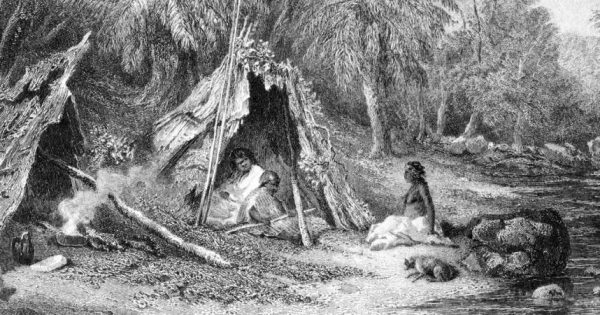
The earliest paleontological example of anything resembling a mattress is from about 77,000 years ago. The ancient mattress was found in a rock shelter in South Africa and measures about three feet by six feet. It’s less than an inch thick and made with alternating layers of reeds and rushes. “Bedding” consisted of leaves and grasses, and ancient Homo sapiens who likely used the mattress also added plants that naturally repel insects, like mosquitos.
While there are few remaining examples of early mattresses, it’s thought that Homo erectus (who preceded modern Homo sapiens) were the first hominids to sleep on the ground. Early hominids were smaller and more chimp-like, so they probably slept in trees to protect themselves from predators. Once hominids discovered fire, they were able to sleep on the ground and use fire to ward off predators.
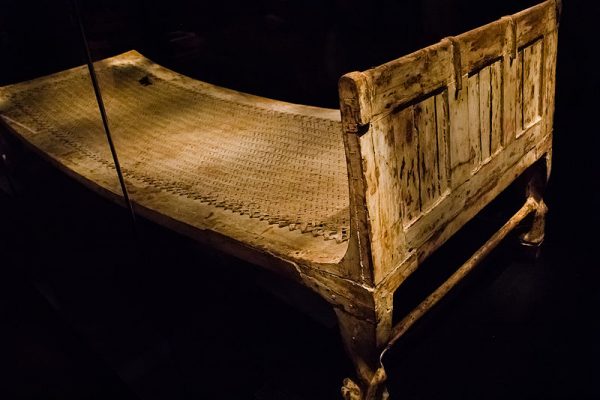
As humans evolved, so did their sleep surfaces. Many cultures began raising their mattresses off the ground. Sometime between 3000 and 1000 BCE, ancient Egyptians made raised surfaces made from wood to protect themselves from pests and snakes on the ground. Wealthier citizens had beds made from ebony and sometimes decorated them with jewels. Mattresses usually were made from wool and bedding from linen. Some even had “pillows,” which were just a wood or stone head support.
Classical History
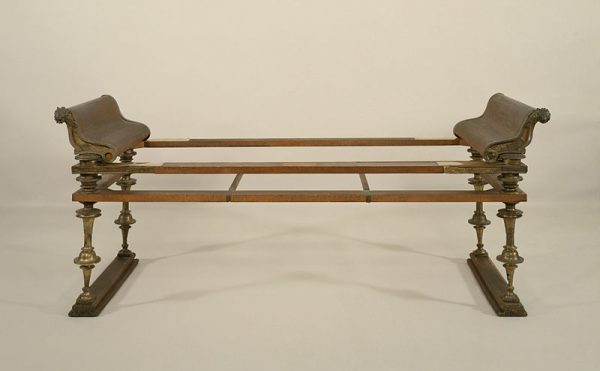
Similar to ancient Egyptians before them, ancient Romans also raised their mattresses off the ground and they often had to use a ladder or stairs to reach them. In addition to wood, some Romans had beds made of metal or ivory. Mattresses were supported by ropes or string. The average Roman had a mattress stuffed with hay or reeds, while the wealthy used wool or feathers and many layers of sheets and blankets. Beds were often used for more than just sleeping and served as a place to socialize and dine as well.
Beds in ancient Greece were similar to those in Rome, and Greeks prioritized comfort above all else in furniture construction. Klines, which resemble couches with a raised headboard, and were used for reclining, eating and sleeping. Wealthy Greeks had more than one kline for different uses and some were decorated ornately and upholstered with rich materials.
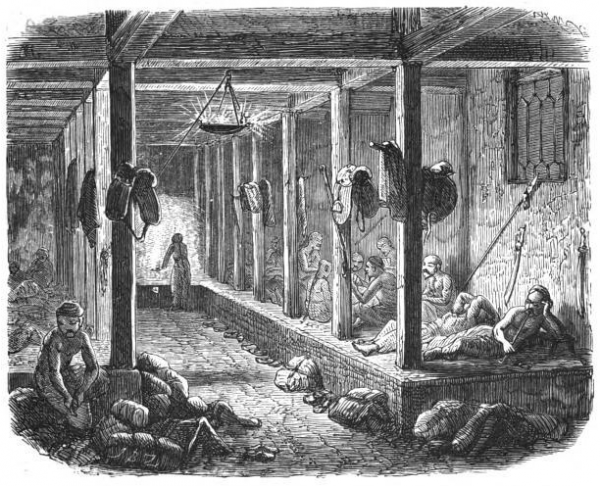
In the eastern world—specifically Japan, Korea and China—beds remained on the ground for quite some time. Many activities, like sitting, eating and sleeping, took place on the ground because it stayed warm in the winter and cool in the summer. Beds like the kang in China consisted of bricks or clay that were heated to keep sleepers warm.
Medieval History
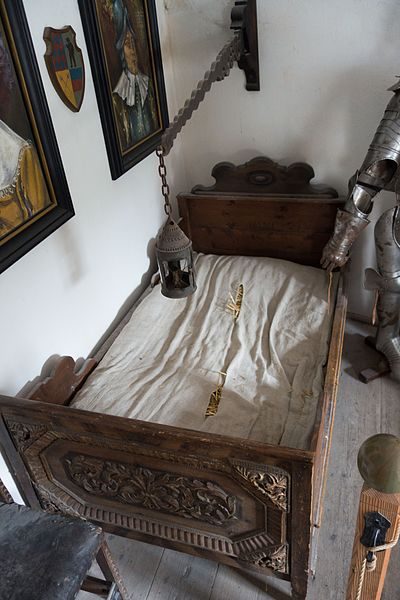
Beds were relatively simple in the early Medieval period and usually made from wood. Mattresses were stuffed with straw and similar materials and either placed on a wooden frame or in a “bed box.” The poor still often slept on piles of straw, hay or leaves on the ground. Around the 12th century, beds became much more ornate and served as a symbol of wealth. Bed frames were decorated with carvings, inlay and paintings, while bedding—and even mattresses—were embroidered. Toward the end of the Medieval period, mattresses stuffed with down became much more common and popular.
It was also around this time that many started to hang curtains around their beds to keep out drafts and pests. These started as common practice for lords and ladies but became more commonplace in later years. Curtains also provided privacy as it was common for multiple people to sleep in the same room. Even the wealthy tended to share bedrooms with their servants.
Renaissance to Modern History
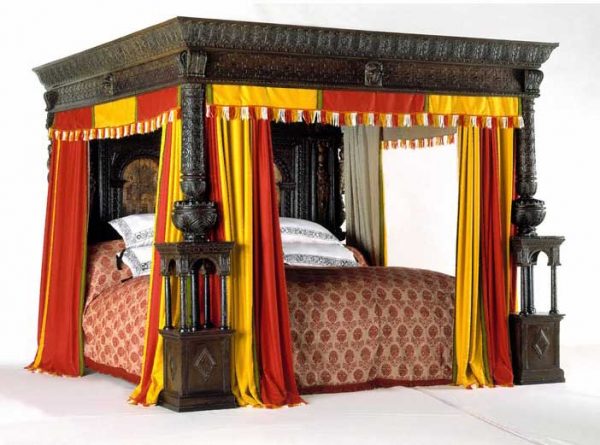
Beds became increasingly ornate through the Renaissance. By the 15th century, beds in western Europe usually had a wood-panelled headboard and two columns at the foot of the bed that supported a tester, or canopy. These beds were very large, often eight feet by seven feet, so that several people could sleep in them. Curtains typically enclosed all four sides of the bed. In the 16th century, beds became even more decorative. One especially famous English Elizabethan bed is the Great Bed of Ware, which measures 10 feet 11 inches square.
The 17th and 18th centuries saw the peak of ornate beds. For the wealthy, these were draped in elaborate, expensive curtains and served as a status symbol. King Louis XIV was known to have 413 beds, and it was thought to be an honor to visit him in his bedroom. Prosperous Americans even slept on four-poster bedsteads with curtains.
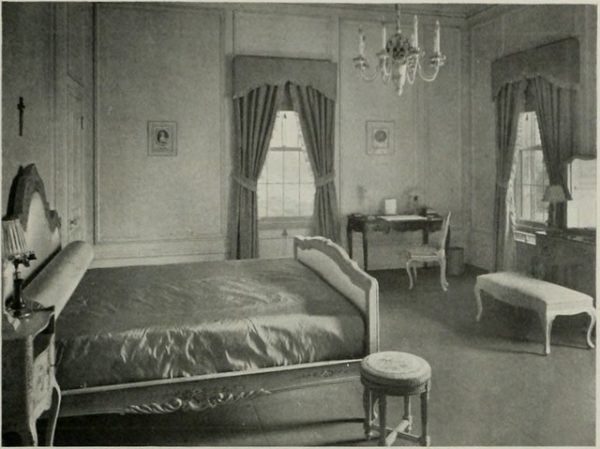
Beds became simpler in the 19th century, with four-posters falling out of style. Mattresses were transformed when coil springs were introduced in the 1870s, and metal frames became more common. At the beginning of the 20th century, beds and mattresses could be mass produced for the first time, making them more accessible. As more companies began making mattresses, buying a mattress became much more about comfort and preference, which remains the case today.
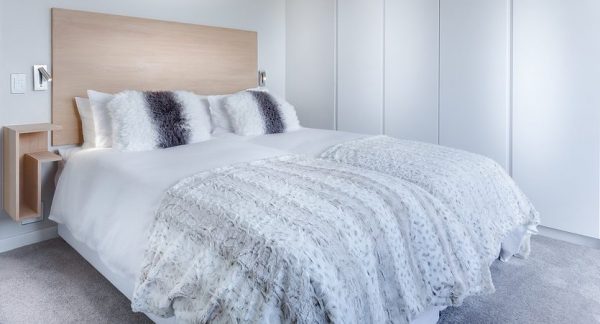
Mattress History By Material
Innerspring
The innerspring mattress was the first modern mattress type and replaced those stuffed with hay, wool, down and other materials. It was invented by Berliner Heinrich Westphal in the early 1870s. He used metal coils, originally designed for the seats of horse-drawn carriages, to make a new kind of mattress. It provided sleepers with a firm, springy sleep surface that was supportive and could withstand compression.
Innerspring mattresses weren’t popular at first, but sales took off starting in the 1930s. They remain popular today, though they face increasing competition from other mattress types. General construction remains the same, but innerspring mattresses have evolved over the years. Current innerspring mattresses vary in coil type and comfort layer material.
Memory Foam
Memory foam—or viscoelastic polyurethane foam—was first invented by NASA in the 1970s. They initially intended to develop a material that would provide better seat cushioning and crash protection for airlines. It was initially called “slow spring back foam” because of its ability to compress under heat and pressure and then return to its original shape.
NASA released the technology to the public in the 1980s, and the first memory foam mattress entered the marketplace in 1991. Memory foam was also commonly used in hospital beds, especially for immobile individuals, because of the material’s ability to reduce pressure points. Those with chronic pain or back issues still find relief from memory foam mattresses.
Latex
Latex comes from the sap of rubber trees, and it has been used for centuries for a variety of products. Latex foam—the material used in mattresses—was first created in 1920s, and it has interesting roots. The Dunlop company spent about five years trying to figure out how to turn latex into a foam. One scientist, E.A. Murphy, is said to have used his wife’s cake mixer to whip latex into the foam we know today. The process added bubbles of air to the material, giving it its unique cushioning qualities. The first latex mattress was introduced in 1931.
Waterbeds
Some accounts claim that the first waterbed was invented by the Persians around 3600 BCE when they filled goat skins with warm water. There are also examples of waterbed-like structures being used in medical settings in the 19th and early 20th centuries.
The modern-day waterbed, however, was developed by Charles Hall in 1968 as his Master’s Thesis project for his San Francisco State University design class. The mattress was hugely popular through the 1970s and 1980s, fueled in part by marketing that focused on the supposed sex appeal of the mattress. Waterbeds comprised 20 percent of mattress sales by 1986, but now make up only about 5 percent of sales.
Airbeds
Airbeds—not to be confused with air mattresses—are constructed with internal air chambers that can be adjusted to change the feel of the bed. The first air-filled mattress can be traced back to 1896 and was sold by Mechanical Mfg. Co. It was marketed as being customizable, lightweight and able to retain its shape.
The air bed we recognize today was released in 1981, and it has evolved greatly since then. Manual controls have largely been replaced by portable controllers or apps, and today’s models are more customizable than ever before.
History of Mattress Size
Mattress size has fluctuated greatly over time. The earliest examples of mattresses were large enough to fit a family. For early hunter-gatherers, one or two people sleeping alone was unheard of. It was common for family, and even friends, to share the same sleep surface for warmth, safety and kinship.
Beds in ancient civilizations like Egypt, Greece and Rome were smaller, more similar to the size of today’s twin bed. That’s likely because these were reserved for the wealthy. Beds became larger during the Medieval period due to heating challenges. Most people slept in one room because it was the only room that could be heated.
During the Renaissance and through the 18th century, beds remained large, partly as a way to show status. Larger beds were also practical. Many wealthy individuals had social gatherings and carried out business in their bedrooms. It was also still common for many individuals to share a bed. Female servants often shared a bed with their mistresses to keep them safe from unwanted advances.
Beds became smaller and less ornate during the 19th century. By the early 20th century, bedding sizes were largely standardized, and most Americans slept on twin or full mattress. Larger queen and king mattresses were introduced in the 1940s, but these didn’t become popular until the 1950s. After WWII, the economic boom meant people had bigger houses and wanted bigger furniture. Marketing efforts also emphasized that people were becoming taller and needed bigger mattresses.
The shift toward larger mattresses continues today. Queen mattresses are by far the most popular mattress size today, followed by king.
Additional Resources
For more basic mattress information, check out these other excellent guides: